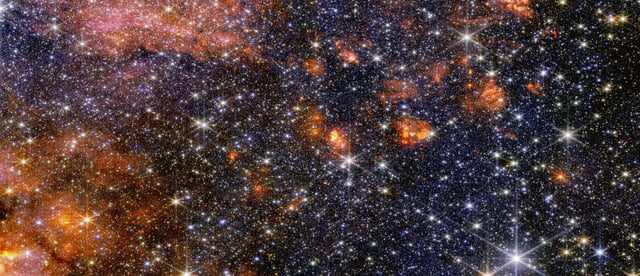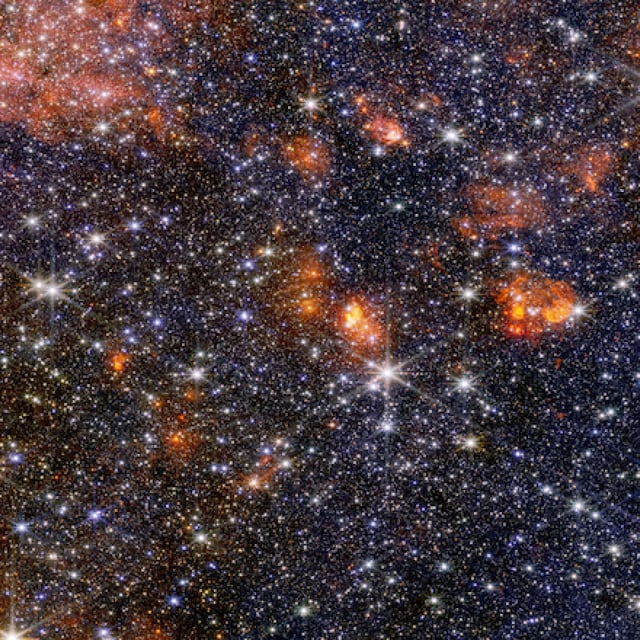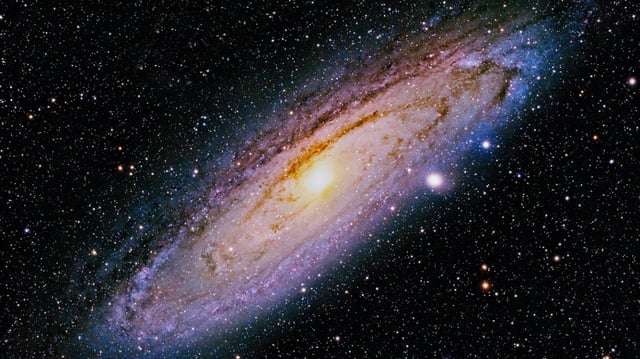Overview
- New NIRCam and MIRI images provide complementary views, with colorful stellar populations in near-infrared and glowing warm dust and embedded protostars in mid-infrared.
- Sagittarius B2 North stands out in the mid-infrared as one of the most molecule-rich regions known, now seen with exceptional clarity.
- Dark patches in the images mark zones so dense with gas and dust that even Webb cannot penetrate them, indicating cocoons of future and very young stars.
- Only a few hundred light-years from Sagittarius A*, the cloud produces about half of the galactic center’s new stars despite containing roughly a tenth of its gas, a key mystery driving the study.
- A new preprint analyzing these data reports previously hidden massive stars and more than a dozen H II regions, suggesting star formation in Sgr B2 has been underestimated and prompting follow-up work to determine stellar ages and masses.


